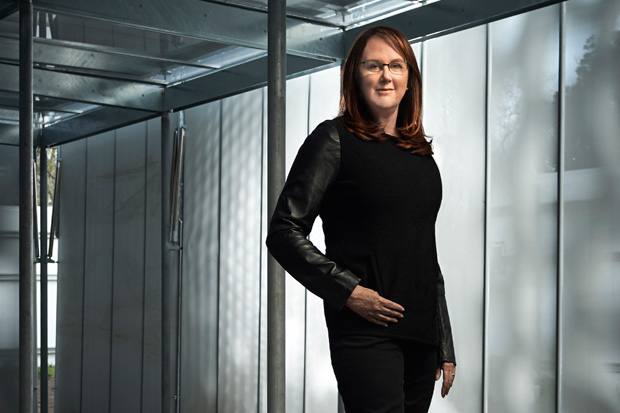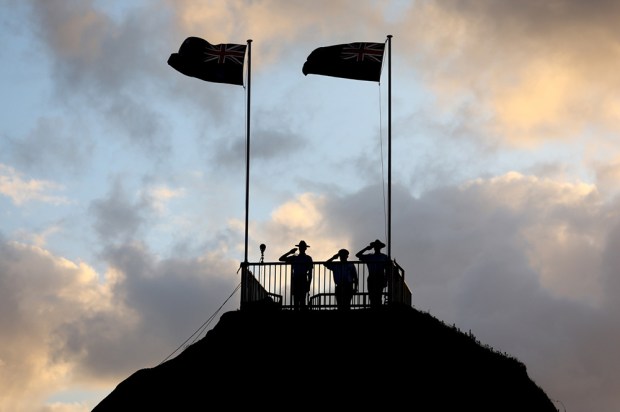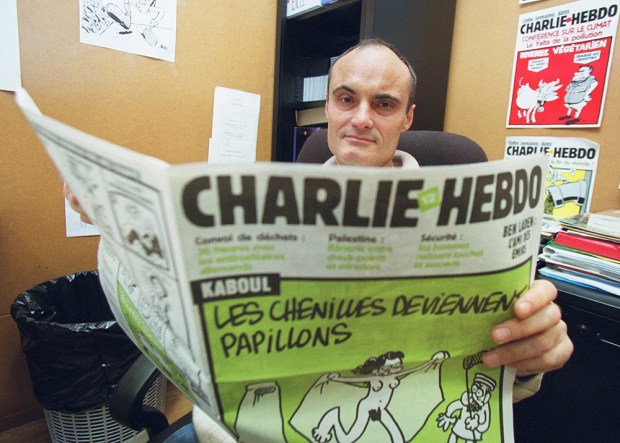In 1939 a Russian Jewish immigrant opened a small lingerie shop in Little Collins Street, Melbourne. Spanning just 35 metres Sussan, as it was called, sold sensible brasseries and no-nonsense underpants.
This tiny store, with its utilitarian wares, became one part in the millions of building blocks that have grown up into modern Melbourne. And, unwittingly, its owner Faye Gandel became the founder of one of the country’s most well loved brands.
Australia is now home to 550 stores in the Sussan Group. Leading the helm is Gandel’s granddaughter, Naomi Milgrom, who bought out her parents and three siblings in 2003 to become sole owner (she is worth an estimated $430 million). Dubbed ‘The Cashmere Steamroller’ for her business kudos and resolve, Milgrom is now Victoria’s richest woman.
With three booming brands under her belt – Sportsgirl, Suzanne Grae, and Sussan – Milgrom is turning her sights to something bigger still: an ambition to help transform Melbourne into one of the design capitals of the world.
In early October Milgrom opened the inaugural MPavilion, modelled on the iconic Serpentine Pavilion, an annual architectural showcase set in London’s Hyde Park and constructed by the likes of Zaha Hadid and Frank Gehry.
The first MPavilion, likewise, has been built by a star architect – Australia’s Sean Godsell – as an incubator of creativity. Over the next four months it will hold more than 100 free arts and cultural events in the Queen Victoria Gardens. In February the structure will be gifted to the city of Melbourne and reassembled in another location.
‘What we want is to create a lasting legacy of architectural gems for the city,’ insists Milgrom, sitting under the shimmering wings of Godsell’s creation at the official launch on a gray overcast morning.
The MPavilion looks like a steel hayshed, not dissimilar to the thousands sprinkled in the vast swathes of the Australian outback. But that underestimates its beauty. Every morning at 8am, pneumatic arms lift the walls and the roof, unwrapping it to the sky like a flower’s petals or a butterfly emerging from its cocoon.
Made of galvanized steel, aluminium perforated mesh walls, and recycled timber from shacks in the Victorian countryside, it embodies ephemeral movement: an architectural ballet if you will. Yet Milgrom and Godsell originally discussed calling it the ‘Shelter Shed’.
The name was quickly dismissed for its connotations (Milgrom did not want to bring up memories from school of ‘people smoking in the back shed’). But the sentiment stuck. Crucially, both the architect and the final design are quintessentially Australian.
Married to the businessman John Kaldor, one of Australia’s most important patrons who gifted his private collection (worth $35 million) to the Art Gallery of New South Wales in 2011, Milgrom has had a long history of supporting the arts and of philanthropy in general.
The Sussan Group has donated more than $5 million in financial aid to not-for-profit organisations and staff provide strategic advice to charities officially aligned to the brands. Sportsgirl, for example, is affiliated with The Butterfly Foundation, which helps to combat eating disorders. It was a natural fit, says Milgrom, because ‘we were seeing a lot of young women coming into the stores and saying: ‘I’m overweight, it doesn’t fit me, I feel fat’’.
Above all, however, it is the MPavilion that is Milgrom’s pet project as the first major enterprise in the newly created Naomi Milgrom Foundation. Funding has been provided for four years in a ‘public-private’ partnership between Milgrom, the city of Melbourne and the Victorian State Government. She explains: ‘I really felt like architecture and design was being neglected as part of the cultural landscape from a philanthropic point of view.’
Milgrom is famously private: her three children are kept out of the media and she refuses to answer questions regarding her family life. But the MPavilion has thrust the fashion tycoon into the spotlight, placing the public gaze on her taste, ambitions, and desire to be taken seriously by the arts. Surely, that makes her nervous?
‘I’m hugely reluctant to talk about anything about my private life – and won’t,’ she maintains. But she does admit that this is a ‘very personal project’. And if Milgrom is clear about her boundaries, she is certainly not cold. Sporting black-rimmed glasses, her hair highlighted with streaks of red, Milgrom is surprisingly funny, upbeat, and down to earth. (She also has a streak of stubbornness: earlier this year, Milgrom won a legal battle to knock down two heritage-listed homes to make way for a greenhouse in addition to her $12 million dollar Italianite mansion).
It is not all grand ideas, though. Milgrom is happy to get her hands dirty in the nitty-gritty running of the MPavilion. Around three times a week, she attends the daily opening ceremonies, hot coffee in hand, when the structure unveils itself to the world. (At night its roof and walls close back down into a sturdy box that can be securely locked).
‘I actually got very emotional when I saw all those young children learning how to balance and juggling [at a circus training event],’ confides Milgrom, sounding genuinely touched. ‘One young mother turned to me, and said: ‘It’s so lovely to be in a space that is expansive, where there aren’t any boundaries, where children can run free – more or less.’’
When Godsell’s pavilion is ‘open’ it has no walls; just vistas of the green park. But it is also a metaphorical as well as physical broadening of horizons. ‘What I love about it is that it is actually fulfilling what the dream was: it is a container of ideas,’ says Milgrom. ‘I think it’s just very fluid.’
That has not stopped the critics. The website ArchitectureAU.com sneered that this was ‘public architecture by fiat’ (Milgrom admits she has the ‘last word’ in commissioning the architect) and suggested that Godsell was an obvious and unambitious choice. One architect from a Melbourne-based firm told media that mimicking London was ‘cultural cringe’.
Could such critiques signify insecurities about the global perception of Australia as a cultural backwater, lagging behind Europe? Milgrom sighs. ‘[Australia] can stand on its own two feet and we do incredibly well. We punch above our weight in science, in music, in architecture, as well, and design. Mark Newman is Australian for goodness sake. I mean, its just laughable, ridiculous!’
As a patron of the arts Milgrom believes in sharing good ideas (Julia Peyton-Jones, co-director of the Serpentine Gallery, flew to Melbourne to officially open the pavilion). She is also a savvy businesswoman. Ultimately, garnering the support of the state government meant using the Serpentine Pavilion, one of the top five design events in the world which attracts 250,000 people a year, as an example of what could go right.
‘The success [Julia had] pointed to the potential success – and any government investing in a private philanthropic pursuit needs to have a clear understanding of what the objective and what the ambition is,’ points out Milgrom.
‘It’s about taking risks,” she says. Such panache is why Melbourne’s lord mayor Robert Doyle christened Milgrom the ‘Cashmere Steamroller’ in the first place. Ninety-eight percent of her 4,500 plus staff are women (as are the CEOs of her three brands) and Milgrom has pioneered flexible working hours in the company to enable staff to balance family and office life.
‘Robert genuinely meant that I love to get things done,’ she insists, adding: ‘The new way forward is for women to be more assertive.’ At least the mayor did not call her the nylon steamroller. ‘Or the polyester one,’ she laughs. ‘Certainly, its cashmere, I think.’
Got something to add? Join the discussion and comment below.
Get 10 issues for just $10
Subscribe to The Spectator Australia today for the next 10 magazine issues, plus full online access, for just $10.
Clarissa Sebag-Montefiore is a freelance journalist based in Sydney.
You might disagree with half of it, but you’ll enjoy reading all of it. Try your first month for free, then just $2 a week for the remainder of your first year.














Comments
Don't miss out
Join the conversation with other Spectator Australia readers. Subscribe to leave a comment.
SUBSCRIBEAlready a subscriber? Log in